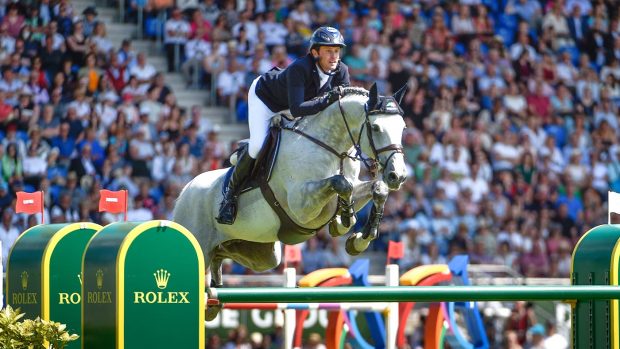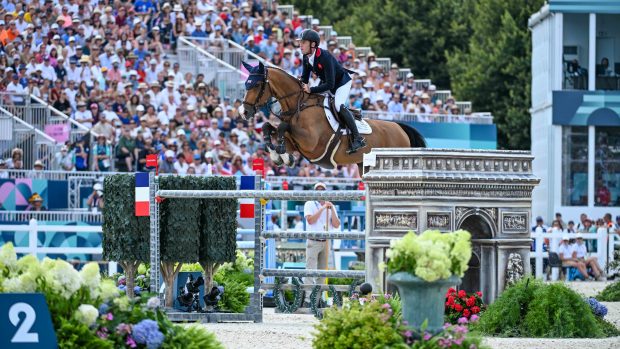It’s been a busy three weeks for us here in Tokyo. We’ve experienced sumo wrestlers, bullet trains, sakura, Mount Fuji and the famous Shibuya crossing – all without leaving the Equestrian Park.
You could say that walking the fascinating Olympic showjumping course has been the closest we’ve come to sightseeing during our time here, such are the necessary Covid restrictions. Or at least, it was until last night when, having now been in the country for more than 14 days, we were finally allowed out and about, as far as our packed reporting schedules allowed.
We spent the evening watching the sunset over the dramatic and varied city skyline from the famous Tokyo Tower, and it was marvellous. The sky was awash with colour as the city lights began to twinkle, and the real-life Mount Fuji smouldered seductively in the dusky distance.
But last night aside, the Japanese culture we have soaked up has all come from the showjumping arena. Every one of Santiago Varela’s tracks this week has been a masterpiece – both technically, with huge fences and challenging lines that mean riders must make clever decisions, and visually.
I have never enjoyed walking a course as much as on the first day of showjumping, the individual qualifier, where we witnessed fences flanked by beautiful kimonos, Kanzashi hair ornaments, traditional Japanese musical instruments – and of course the sumo wrestler guarding the upright that proved one of the trickier obstacles on the course (below, jumped by Ben Maher and Explosion W).

By day two of the showjumping, the individual final, we knew we could look forward to something special, but I hadn’t expected so many different and equally beautiful fences, portraying a new range of Japanese heritage and landmarks.
Armed with a brilliant document giving us the background and inspiration for each fence on the Olympic showjumping course, we learned about the red thread legend (according to which everyone is tied by the little finger with an invisible thread that will lead them to a person which whom they will make history), the Sakura cherry blossom (considered to be beautiful and ephemeral, and a metaphor for life) and admired the stunning painted wall depicting Mount Fuji.
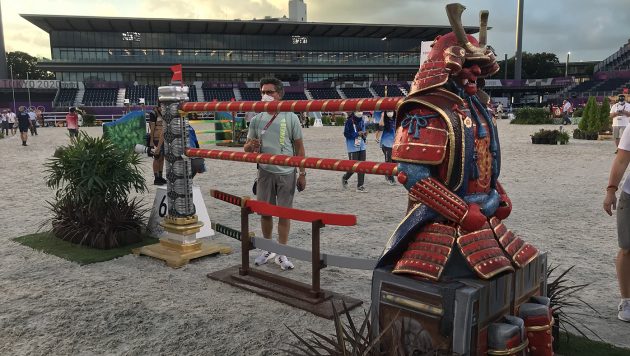
The course for the team qualifier offered up more treats yesterday – there was the eye-wateringly intricate design of the Himeji Castle, the Shinkansen “bullet” train running under fence three, and the return of the spooky good luck charm, the Daruma. We also had Samurai swords and soldiers (above), Japanese calligraphy, Hanafuda playing cards and – one of my personal favourites – a skinny wall with a mural of the famous Shibuya Crossing (below).
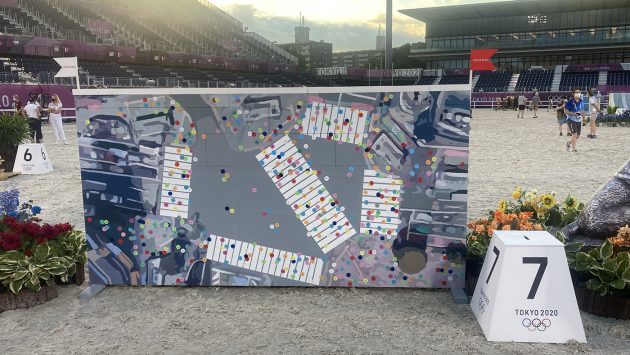
For me, these carefully thought out and cleverly designed fences have brought a whole new dimension to the Olympic showjumping competition. It has also really reminded us what a very special and unique country Japan is, even if we haven’t been able to see as much of it as we would have liked. But nonetheless, I’ve loved learning about elements of the culture I had never heard of or encountered – I just hadn’t imagined that would happen while walking the showjumping course.
You may also be interested in…

‘The whole course is tough — and the time is very tight’: riders react to Olympic team showjumping track

H&H Olympic reporter’s blog: ‘The Tokyo Games has been full of drama – and then there was an earthquake’
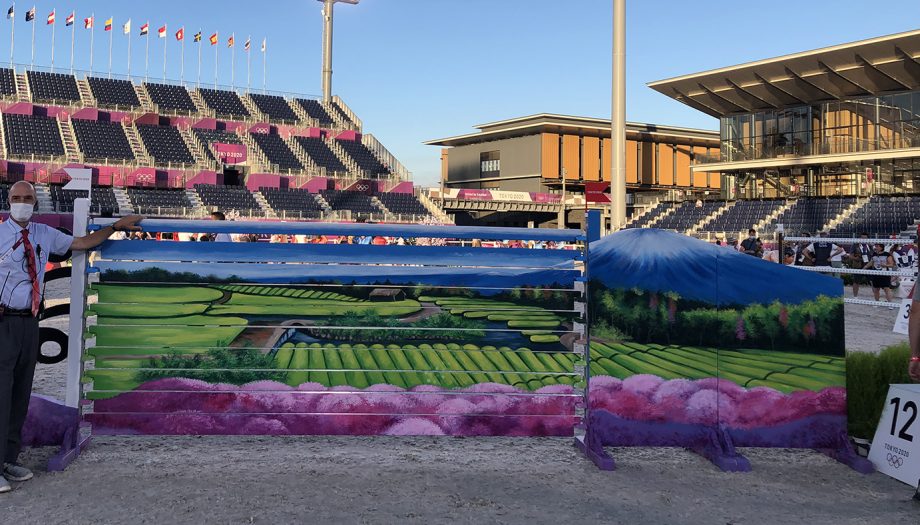
Crunch time: take a peek at the Tokyo Olympic showjumping individual jump-off course

H&H Olympic reporter’s blog: ‘My emotions have been on hold – but these are our people, contributing to Team GB’

Subscribe to Horse & Hound magazine today – and enjoy unlimited website access all year round
Horse & Hound magazine, out every Thursday, is packed with all the latest news and reports, as well as interviews, specials, nostalgia, vet and training advice. Find how you can enjoy the magazine delivered to your door every week, plus options to upgrade your subscription to access our online service that brings you breaking news and reports as well as other benefits.


